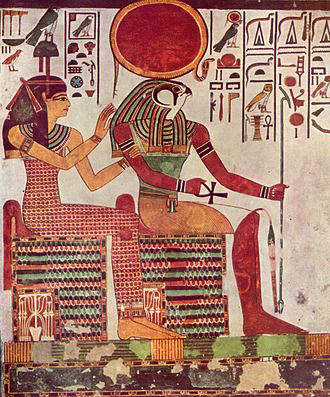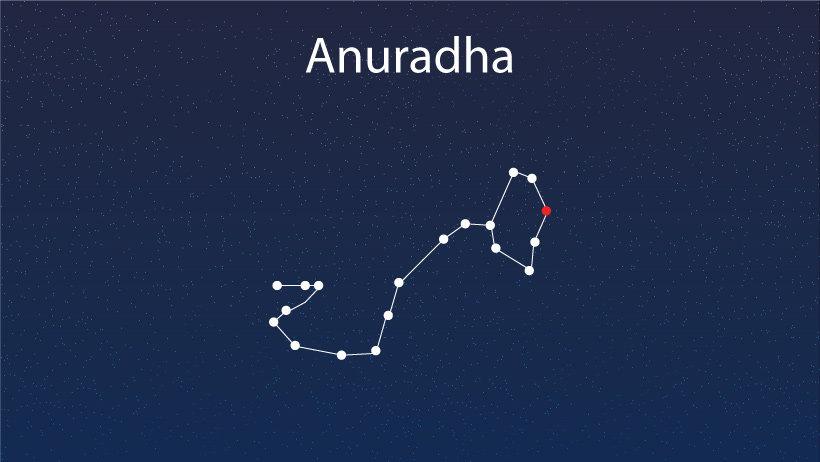#worship
https://www.youtube.com/watch?v=UMj6Yk0A45s
#cow
#mushroom #magic
The Shocking Historic Reason #Why Hindus #Worship #Cows | #PraveenMohan
https://www.youtube.com/watch?v=wrbn-yy5xcE
#RajarshiNandy explains about #10 #Mahavidyas, #How To #Worship Them | Higher Realms Of Upasana, Siddhis
The #Ranveer #Show is back with another episode with Rajarshi Nandy. In this episode, #Rajarshi sir dwelled deep into the world of spirituality and explained the true form of #Maa #Kali. Shri Rajarshi Nandy is a Sadhaka and an adherent of the #Sanatan #Dharma. Rajarshi sir is also a technical writer by profession, an upasaka, an author, a speaker, and a columnist with a keen interest in exploring spiritualism.
In this episode, we dives deep into the concept of the Dash Mahavidyas, exploring the tantric versions of #Saraswati, #Lakshmi, and #Durga and their unique powers and applications. The discussion also touches on the role of yoginis, the significance of Kul Devata, and the importance of embracing the complexity of Shaktism.
Every time I have a conversation with #Rajarshi-Nandy, I find myself gaining so much more knowledge. I hope that after seeing this episode, you will feel the same. Enjoy this episode and let us know your thoughts in the comments!
(0:00) - Start of the podcast
(3:27) - Rajarshi Nandy x Ranveer Allahbadia begins
(4:30) - Maa Saraswati
(13:11) - Reaching high realms of Upasana
(17:13) - Maa Lakshmi
(28:30) - Tantra, mantra & vaishnavism
(32:34) - Maa Kali
(36:50) - Sages of ancient India
(39:40) - Maa Durga
(46:00) - Story of Mahishasura
(51:10) - Significance of animals
(57:00) - Kul devta and kul devi
(1:08:30) - Chausat Yogini
(1:13:30) - Maa Matangi
(1:17:30) - Temples that are destroyed
(1:19:50) - Mahavidyas
(1:26:40) - Gurus
(1:35:20) - Maa Chinnamasta
(1:42:15) - Kundalini Jagaran
(1:52:00) - Maa Bhuvaneshwari
(1:58:43) - Maa Bagalamukhi
(2:05:14) - Maa Dhumavati
(2:10:45) - Maa Tripura Bhairavi
(2:19:34) - Thank you for watching
(2:20:56) - End of the podcast
https://www.youtube.com/watch?v=3r_J2eP0vOo
#Kaal #Bhairav - #Origin, #Worship & #Sadhana by #RajarshiNandy @Adhyatmikta @LevelSuperMind.

#gods #celebrations #worship
RA ~THE EGYPTIAN SUN GOD
John 1:1 Hebrew Scriptures.
1 In the beginning was the Word, and the Word was with God, and the Word was God.
2 The same was in the beginning with God.
3 All things were made by him; and without him was not any thing made that was made.
4 In him was life; and the life was the light of men
From then on, it gets complicated. Wherever there was a human being, in every land on Earth, they created their own version and interpretation of Who is, Who, and What is What. Multiple Choice, or None of The Above.
Israeli attack destroys mosque in Gaza | AJ #shorts
Al Jazeera’s Anas Al Shareef reports from the scene of an Israeli air raid which destroyed a mosque in northern Gaza. The UN says Israel has hit more than 10...#AlJazeera #AlJazeeraEnglish #Attacked #Destroyed #Gaza #Israel #Masjid #Mosque #Palestine #Safe #War #Worship #alJazeera #aljazeeraEnglish #aljazeeralive #aljazeeravideo #aljazeeraEnglish #aljazeeralatest #aljazeeralive #aljazeeralivenews #latestnews #newsheadlines
Israeli attack destroys mosque in Gaza | AJ #shorts

#Happy #Navratri Day 4 – #Mercury

As the nine nights represent the nine planets, we will be having a planetary observance of Navaratri with an account of one of the planets for each of the nine nights. The fourth day of Navaratri is marked to #worship #Goddess #Kushmanda. The Fourth planet is Mercury. It is said that one should wear royal blue on this day, as it is considered good for health and wealth. Our colour for this day is #Royal-Blue!
Today is the fourth day of the Navaratri celebrations which are held for nine nights. All festivals are meant to remind mankind that they should cultivate noble qualities by engaging themselves in activities beneficial to one’s own self and society. Sai Baba has told that Navaratri, the nine nights, represents the Nine Planets.
In Hindu mythology, Navaratri celebrates the victory of Goddess Durga over Mahishasura, the buffalo-headed demon. She fought for nine days and nine nights before emerging victorious on the tenth day. Goddess Shakti in the nine forms is worshipped during the period for knowledge, wealth, prosperity and auspiciousness. Knowingly or unknowingly during this period we also recognise the primordial source of energy (Shakti), which manifests in all living and nonliving.
Sai Baba went on to say that each planet has its own significance. However, these planets are not outside, they are #within. So we take the opportunity to examine the energies of the planets within, and examine how the #Divine #Mother is related to these energies.
Mercury
Mercury is also known in #VedicAstrology as #Budha, the awakened discriminating #intellect – the part of us that knows. Mercury owns two signs, Gemini and Virgo. Mercury is exalted in Virgo at 15 degrees, and debilitated in the opposite sign, Pisces. Where the Moon is the innocent mind, Mercury is the intellect that discriminates between benefic and malefic ideas, or good and evil. Mercury is adept at dealing with duality.
Mercury does not have a distinctive personality of its own; it takes on features of the planets which are associated with it. Mercury, planet of communication, articulates and expresses whatever influence it receives from other planets. For this reason, brilliance of expression, adjustment and flexibility are common traits of Mercury. Mercury traditionally has the function of Messenger of the Gods; Mercury functions to take messages from Gods to Man and from Man to the Gods.
Mercury develops intellect. Taking duality, it enables the subjectivity of an idea to be objectified, and helps to understand the inner reality of external phenomenon. A favourable disposition of Mercury renders perceptive, clever persons who are good debaters, who can argue either side of a question and thus, we can often find that Mercury is strong in the chart of lawyers. Mercury is intellectual and careful with details.
Day Four
Goddess Kushmanda
Kusmanda – She Who brings #happiness
Kushmanda is a Hindu goddess, credited with creating the world with her divine #smile. Legend has it that Lord Vishnu was able to begin the creation of universe, when Goddess Kushmanda smiled and receded. She represents that form of Durga which is the source of all. Her name signals her main role: Ku means “a little”, Ushma means “warmth” or “energy” and Anda means “cosmic egg”.
Kushmanda is worshipped on the fourth day of the festival of Navaratri and She is believed to improve health and bestow wealth and strength. Goddess Kushmanda has eight hands and because of that She is also known as Ashtabhuja Devi. It is believed that all the power to bestow Siddhis and Niddhis are located in her japamala (rosary beads).
Legend has it that Goddess Durga gives birth to the universe in the form of Goddess Kushmanda. She is also sometimes depicted as pregnant with the Brahmand or universe. It is believed that the eternal darkness ended when she smiled. And this led to the beginning of creation. This form symbolises that Shakti is the primordial source.
Mercury and the Feminine
Vedanga – Jyotish ( #astrology texts) – tell us that Mercury is hermaphrodite, meaning s/he is bearing signification of both genders. It is more appropriate to say that Mercury is androgynous, neither male nor female. Androgyny is also known in this day and age as intersex.
Just as the Creation narrative has Kushmanda and Vishnu at the cause of Creation, so also we see the emergent glance of the androgynous Mercury, encapsulating this act of creation with the dual genders.
We have clues to the important role and function Mercury has with regard to the mind, the intellect and duality. #Shakti is the prime force behind all dualities and Shakti can be found linking subject and object, in the glance of Mercury. The mind is an energy field of Shakti with neuronal impulses and connections, creating an elaborate web of knowledge and self interest (referring to the autonomic nervous system and instinctive responses of the body.) The mind is a bundle of thoughts bound together by the shakti of memory. Thinking is guided by the intellect – which is called buddhi in Sanskrit. The buddhi is nearest the Soul and derives over 90% of its illumination from the Soul.
Significance of Navaratri
“During these sacred nine days (Navaratri), people go through the sacred texts such as Devi Bhagavatam, Ramayana and Mahabharata. People also worship the deities Durga, Lakshmi and Saraswati. Goddess Gayatri is the presiding deity of our senses. Savitri is the presiding deity of speech. All these three are within the same Principle of Truth. Gayatri Mantra begins with ‘Om Bhur Bhuvah Svah’. ‘Bhuh’ means materialization (Body); ‘Bhuvah’ means Vibration (Life Principle); Svaha means Radiation (Atma).
During these nine days, Goddess Shakti (Energy Principle) is worshipped. Truth, righteousness, peace, forgiveness are all expressions of the Principle of Shakti. Truth is the primal cause. There is nothing other than this. All faculties of energy are present in this Truth. So, consider Truth as your mother and follow it. The Vedas proclaim, ‘Satyam Vada; Dharmam Chara‘, which means speak the truth and follow the righteousness. Unfortunately, today people do not follow this. On the contrary they follow Asatya (untruth) and Adharma (unrighteousness)” Sai Baba. SS, 11/98, p. 284

#Anuradha #Nakshatra is the 17th of 27 #nakshatras. If you were born when the #moon was between 3:20-16:40 degrees Scorpio
Sanskrit Name: अनुराधा (Anuradha) comes from the #Sanskrit words अनु (to come after) and राधा (prosperity or worship). One meaning of Anuradha is “the follower of good fortune,” indicating success, good qualities, and a #simple #heart.
Planetary Ruler: #Saturn. Saturn is the bestower of karmic reaction, the good or bad results of one’s past activities. It is associated with discipline, obstacles, hard work, and philosophy and law.
Nakshatra Group: Godly. Nakshatras are divided into three classes — monsters, humans, and gods. Anuradha is a godly nakshatra. People in this group are generally good-natured and fortunate in life. However, they may struggle with pride and a sense of entitlement.
Zodiac Sign: Scorpio. Scorpios are intense, reclusive, and bursting with energy.
Deity: #Mitra. In Vedic theology, Mitra is the lord of friendship, partnership, and companions.
Symbol: #Lotus flower. This represents versatility, beauty, and the ability to rise up out of bad circumstances.
Power: To #worship. Persons born under the star of Anuradha have a natural inclination for spirituality. They seek the essence of religions, avoid sectarian dogmas, and strive to find the presence of God within all persons and things.
Resonant Syllables: In India, the birth nakshatra is traditionally used as one means of choosing the name of a child. The corresponding syllables for the four quarters (padas) of Anuradha are Na (ना), Nee (नी), New (नू), and Nay (ने). The syllable of a person’s first name is sometimes used when calculating an astrological chart if the time of birth is unknown.
Strengths
Anuradha natives are hardworking and contemplative. They don’t like wasting time and neither do they enjoy frivolous activities, such as gossip, meaningless arguments, or fancy dinner parties. Due to their refined sense of taste, they prefer intimate gatherings that focus on enriching conversations and meaningful interaction. Nevertheless, they are not at all snobbish. They are friendly to all and are generally quite popular in among their peers.
Those born under Anuradha are wise and philosophical souls. They are avid learners who can be found reading books on a wide variety of topics. They are able to adjust themselves to live comfortably in any kind of environment, and their broad expanse of knowledge enables them to thrive virtually anywhere.
You are spirited, focused, and virtuous. You enjoy getting things done and being of service to others. Your good character wins you genuine admiration and friendship from others.
Anuradha Careers
Persons born in Anuradha can do well in a wide variety of roles. In particular, they may gravitate to careers that involve traveling.
Some ideal professions include:
Actor, musician, artist, or craftsman
Diplomat, lawyer, or politician
CEO or business person
Healer, counselor, or paranormal investigator
Weaknesses
Anuradha natives can be melancholic and emotional. In Vedic astrology, the moon is the indicator for the mind — it determines our mental and emotional personality. In the sign of Scorpio, the moon is considered to be debilitated, or weak. This means that Scorpios are more likely than others to suffer from mental challenges like depression, anxiety, and so on. However, with every obstacle comes hidden opportunities for growth. By cultivating a practice of meditation, for instance, and building up your mental discipline, such difficulties can be easily overcome.
Those born in Anuradha can also be somewhat guarded. They do not easily open up or place their trust in others. This can cause problems in intimate friendships and romantic relationships. They may be needy, insensitive, rigid, and controlling. Be careful not to impose your own perspectives and needs on those around you. Learn to respect and appreciate others for who they are, instead of trying to manipulate them into who you think they should be.
You can be jealous of the success of others, and you are vindictive when crossed. You also have a harder time tolerating hunger than most. Take care of your body and mind — by maintaining the vehicle of this material body, it can be a powerful asset for spiritual development.
Recommended: Learn more about science of the Vedas and how Vedic knowledge can help you elevate your consciousness and enhance your life.
Other Personality Traits
You are likely to travel. You have an itinerant nature and enjoy seeing other places and cultures. You may have many different homes throughout your life.
You are a good listener. You are thoughtful and patient, and you enjoy listening to others. Others may find you to be not very talkative.
You may follow bad advice. You are somewhat naive when it comes to worldly matters, and you have a hard time discerning true friends from those who might take advantage of your simple, virtuous nature.
You are interested in religion and world scripture. You are a balanced seeker and you can take inspiration from many different spiritual paths. However, be wary of superficial or shallow practice. Real spiritual maturity often requires making a serious commitment to following a particular path.
Anuradha Compatibility
Anuradhas’ sexuality is symbolized by a female hare. In terms of physical compatibility, this makes them an ideal match for persons born under Jyeshta nakshatra.
Based on holistic matching, Anuradhas are most likely to find happiness in long-term partnerships with:
Ashwini (for male natives)
Rohini (for female natives)
Mrigashira in Taurus
Punarvasu in Cancer
Pushya
Ashlesha
Swati (for female natives)
Vishakha in Scorpio (for female natives)
Jyeshta
Purva-bhadrapada in Pisces
Revati
Note: Compatibility in relationships is a complex science that looks at many different factors. You should always consult with an experienced astrologer who can carefully analyze the charts of both you and your partner.
Anuradha’s Four Quarters ( #Padas)
Each nakshatra is divided into four quarters, also known as padas, of 3:20 degrees each. These quarters are based on a 1/9th divisional chart, known in Sanskrit as navamsha.
The moon’s position at your time of birth determines the quarter in which you are born.
First Quarter (3:20-6:40 degrees Scorpio): Leo. You possess great confidence and are a skilled speaker. You have an intense personality and can be very successful in life. However, you may be somewhat egotistical.
Second Quarter (6:40-10:00 degrees Scorpio): Virgo. You are discriminating, practical, and highly curious. You have a keen intelligence.
Third Quarter (10:00-13:20 degrees Scorpio: Libra. You are friendly, sociable, and musically-inclined. However you may be prone to emotional instability.
Fourth Quarter (13:20-16:40 degrees Scorpio): Scorpio. You possess abundant energy and an active interest in the mystical dimension of life. However, you may be harsh in your dealings with others.
Anuradha in Electional Astrology
In electional astrology, also known as muhurtha, nakshatras are used to determine favorable days and times for important ceremonies and events, such as weddings, buying a new house or vehicle, commencing a project, or conceiving a child.
The electional nature of Anuradha is Mridu, “soft” or “mild.” Anuradha is an excellent nakshatra for:
Beginning a journey
Undergoing a medical operation
Marriage ceremonies
Conceiving a child
Purchasing new clothes or jewelry
https://popularvedicscience.com/astrology/anuradha-nakshatra/
https://www.bitchute.com/video/FJpBRvbV6IIQ/
#ROBERT_SEPEHR - #Moloch ( #Saturn) #Worship
For Unlawful Carnal Knowledge #fuck
Banned by the church !
An Altar in a Protestant Church?
Another rant by Robin... 😤
While it's true that we #Protestant #Christians offer "sacrifices" in our #worship, they are sacrifices of praise, "the fruit of our lips," as the KJV bible puts it. And we give sacrificially - of our money and time and talents. We "lay them on the altar" in a figurative sense, not as the #Papists do in their #Mass, literally repeating the crucifixion of Christ on every occasion of their Mass. It is not "the Lord's Supper" in any biblical sense, but a new and literal sacrifice of Christ for the forgiveness of sins committed since the previous Mass.
All of the Protestant denominations confess that #Christ died once for all, and that His sinless life, atonement on the Cross, and resurrection was sufficient to atone for and wipe away all guilt for all sins committed by all of His elect. Once for all time.
So why would any Protestant church (and others not aligned with the Protestant #Reformation) refer to any part of their church's architecture as an "altar?" What Christ did is sufficient! There is nothing to be added to His perfect, completed work, other than the application of Christ's work to the hearts of His people by the Holy Spirit. There isn't any other sacrifice, nor any other way to atone for our sins, our failures, our faults, or sinful desires. Unless it is made completely clear on every occasion that the "altar" in a Protestant church is representative of legitimate Christian sacrifice (we are, after all, "living sacrifices" to God, qualified as such by the sacrifice of Christ).
/😤
Apr 6, 2023 #AncientTechnology #PraveenMohan #hinduism-13 min
Did #ancient #people #worship #lizards? Are #reptiles #Gods? Why did ancient builders carve and pray to lizards?-
Source: https://youtube.com/watch?v=7vSYUGd43Y8
---0:00 - Shape Shifting Lizards
1:23 - The Visible Third Eye
2:59 - A Divine Creature
4:36 - Jesus Christ Lizard
5:17 - A Giant Lizard in Tanjavur
5:48 - Fire Resistant Lizards
7:35 - The Golden Lizard
8:11 - Secret Worships in America
9:26 - Connection between Lizards & Humans
11:13 - Reptile Worships
11:59 - The First GOD?
12:55 - Conclusion
In Ancient Times, people around the world, worshipped Lizards as Gods. This is largely forbidden and forgotten today, but in India, there is a 1800 year old temple, and you can see devotees lining up to touch and worship a carving of a Lizard. Actually, there are 2 lizards here, one is a giant Golden lizard, and the other one is a smaller, silver lizard. Today, they have put metal engravings, covering the ancient stone carvings behind them. And worshipping lizards is not a recent practice, the name of this temple is Varadaraja Perumal Temple and it was built in the 3rd Century A.D, so this worship started at least 1800 years ago. Ancient Indians believed that Lizards and other reptile like beings came from the sky, and had magical powers like Shape Shifting. Even today, you can see that Hindus believe that these Lizards can help them heal from their diseases and bring them good fortune.
But this is not the only Indian temple where Lizards are worshipped as Gods. There is another temple called Balligiri, where there is another Lizard engraving on a piece of metal. In this temple too, it is worshipped as a God of Good fortune.
But this is strange, right? Even if you are a Hindu, you are probably be surprised that Lizards are still worshipped as Gods, because I am showing you a rare phenomenon. But why are they worshipped as Gods? Because Lizards have a third eye, yes they physically have a third eye, called the parietal eye, and many times it is located, exactly where you want it to be located. Yes, on the forehead, between the 2 eyes, very similar to the third eye depiction in Hinduism. And, not only does it look like an eye, in some lizards like the Tuatara, it also has a lens, cornea and a retina like an actual eye. Scientists now confirm that this third eye can not only sense light, it can also be used as a GPS navigation system. And guess what, it is part of the Pineal complex, meaning it functions with the pineal gland.
Some claim that in Ancient India, a type of Lizard people or Lizard Gods existed, and they co-existed with humans. These reptiles were quite sophisticated and they even assisted some kings in war. In this ancient temple, you can see a battle scene. Here is a soldier on a horse, wielding his sword. At the bottom, there is another man with a sword in one hand and a shield in the other hand. But what is that scaly thing next to him? Look at its skin, you are immediately reminded of a crocodile, but it is standing on two legs, and see what it is about to do. It is about to bite a man’s head off, alive. Look at the size of the Lizard and the size of the Human, the Lizard being is quite large, it is taking out one man with a single bite, and is handling another man with its claws. There are no such giant Lizards today, and what I find interesting is that its third eye is covered with a religious symbol called Urdhva Pundra, this symbol is also worn by Lord Vishnu and his followers, clearly indicating that this Lizard is not just some random animal, but rather a divine, Lizard person.
Indian texts talk about a Lizard called Nriga, who could shapeshift into a human whenever he wanted. They also mention that he could change his skin color like a Chameleon and blend with the surroundings. According to some, he was also capable of walking on water. This is really interesting, because some Lizards can walk on water. In the Americas, the Basilisk is more commonly known as the Jesus Christ Lizard, because it can walk on water.

#Anuradha #Nakshatra in #Astrology
Anuradha Nakshatra is a ‘Bright Star’ or ‘ #Star of #Success’. Anuradha means ‘following Radha,’ representing love, beauty, fame and success.
However, #Goddess #Radha was born in this Nakshatra. Natives falling in this Nakshatra have ‘Radhana #Shakti,’ which means the power of ‘ #worship’. They are embodiments of compassion, devotion and friendship. Their deity is Lord #Mitra – one of the names of #Surya, the #Sun. The name itself means ‘friend’.
Anuradha natives are the sovereign principle of human solidarity who bring friendships, partnerships and relationships together. Their symbol is a ‘staff’ representing the strength of self-defence and a ‘ #lotus #flower’, representing the ability to rise above dire circumstances. In those circumstances, you may feel lost, but you are never alone! Talk to our astrologer today and get rid of your issues. The first consultation is on us!
If you belong to this Nakshatra, you may have a better chance of success away from home or in a foreign land. You have a welcoming aura and are very accepting of uniqueness in every being. You can make friends easily and quickly. You are very helpful and go out of the way to get someone out of trouble. Travel is part and parcel of your life, and you grow up and live far from your native place.
Although this Nakshatra is a star of success, the natives have to go through a turbulent life. They achieve success late in their life, be it in business, career or relationship. They are very spiritual and have an interest in mysticism. They are wise, loving, creative, mystic and thoughtful individuals.
Anuradha folks get less support from their father and siblings. Whatever they achieve, it’s because of their own efforts and persistence.
In the zodiac wheel, Anuradha Nakshatra is connected to the Scorpio sign.
https://www.mypandit.com/astrology/nakshatras-constellations/anuradha








